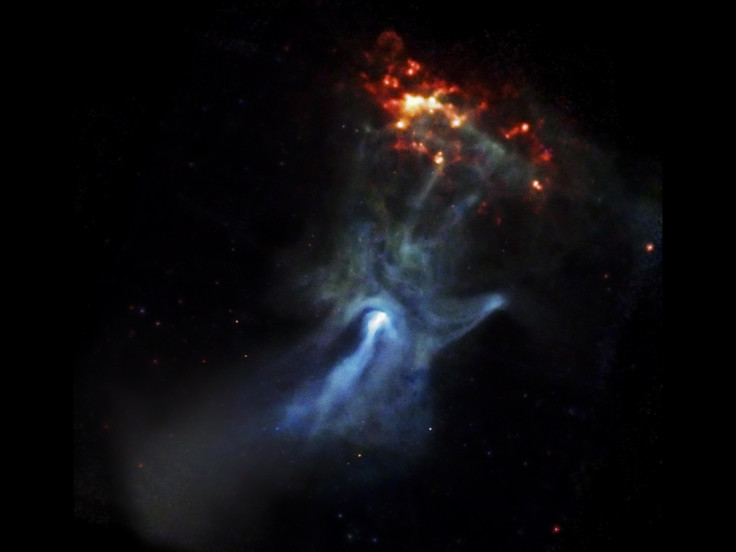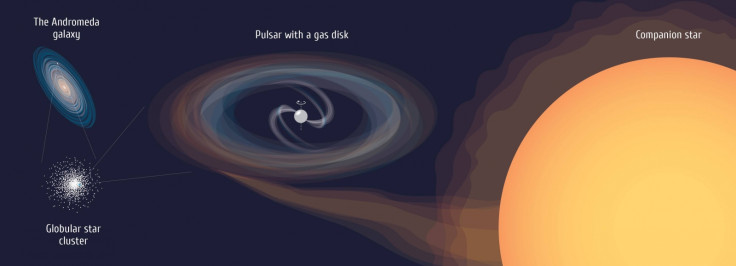Ultra-slow pulsar XB091D should be slowing down, but it has started to speed up
Pulsars usually rotate more slowly as they age, but XB091D is spinning faster.

The neutron star XB091D is unique. It is only the second pulsar to be found far outside our galaxy. It is an ultra-slow pulsar in the Andromeda galaxy, and scientists have discovered that it is now speeding up, even though pulsars normally get slower as they age and lose energy through radiation.
Pulsars emit beams of radiation aligned with their magnetic poles. Pulsars also spin very quickly, with the fastest rotating at more than 700 times a second.
Each time they rotate, a pulse of radiation can be detected from Earth. XB091D is spinning unusually slowly, emitting a pulse every couple of seconds.
But sluggish XB091D is now set to start spinning thousands of times faster. The neutron star is being rejuvenated by another nearby star, from which it is pulling in matter.
The matter from the neighbouring star forms an accretion disc around XB091D, which tears the disc apart, emitting X-ray radiation. This is allowing the star to speed its rotation again. It is thought to have begun this acceleration about a million years ago, according to a paper in The Astrophysical Journal.
Researchers used the European Space Agency's XMM-Newton space observatory to collect data on X-ray photons from pulsars and other astronomical objects.
"The search for pulsars among the extensive XMM-Newton data can be compared to the search for a needle in a haystack," said study author Ivan Zolotukhin of Lomonosov Moscow State University in a statement.
"In our galaxy, no such slow X-ray pulsars are observed in hundred and fifty known globular clusters, because their cores are not big and dense enough to form close binary stars at sufficiently high rate."
The formation in this part of the galaxy suggests that it is in fact a remnant of another galaxy that was consumed by Andromeda, leaving behind a dense cluster of stars.

"So, we are dealing with a large and rather rare object – with a dense remnant of a small galaxy that the Andromeda galaxy once devoured," said Zolotukhin. "The density of the stars here, in a region that is about 2.5 light years across, is about ten million times higher than in the vicinity of the Sun."
© Copyright IBTimes 2025. All rights reserved.





















